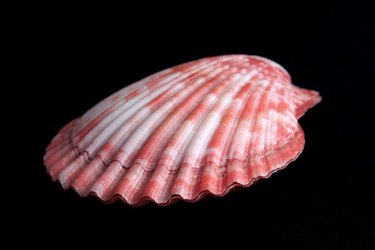
Clams serve a variety of purposes. Some clams make pearls, either in the wild or in a farm-like environment. Other clams are used solely for foods like clam chowder or other seafood options. The shells are often used for decorative purposes or collections. A clam makes it own shell by adding hardened muscle tissue and building out as it grows. The shell ends up with three layers that support and protect the clam inside the shell.
Nacreous Layer
Video of the Day
The nacreous layer of the clam shell is the innermost layer of the shell. This is the area of the shell which touches the clam and connects the clam to the shell. The nacreous layer is smooth and made up of soothing materials for the clam that make the clam inside comfortable.
Video of the Day
Prismatic Layer
The prismatic layer of the clam shell is the middle layer of the shell. The middle layer adds stability and strength to the shell and supports the outer layer and the inner layer. It neither touches the clam directly nor the outer elements of the water. The sole purpose of the middle layer is added strength and support for the rest of the shell.
Periostricum Layer
The periostricum layer is the outermost layer of the shell. This is the part of the shell that protects the clam and is extra hard as a protection against predators. Many clam shells periostricum layer is slightly jagged or rough as a deterrent against being eaten by other aquatic animals. The main purpose of the outer layer is protection with a secondary purpose of supporting the clam inside.